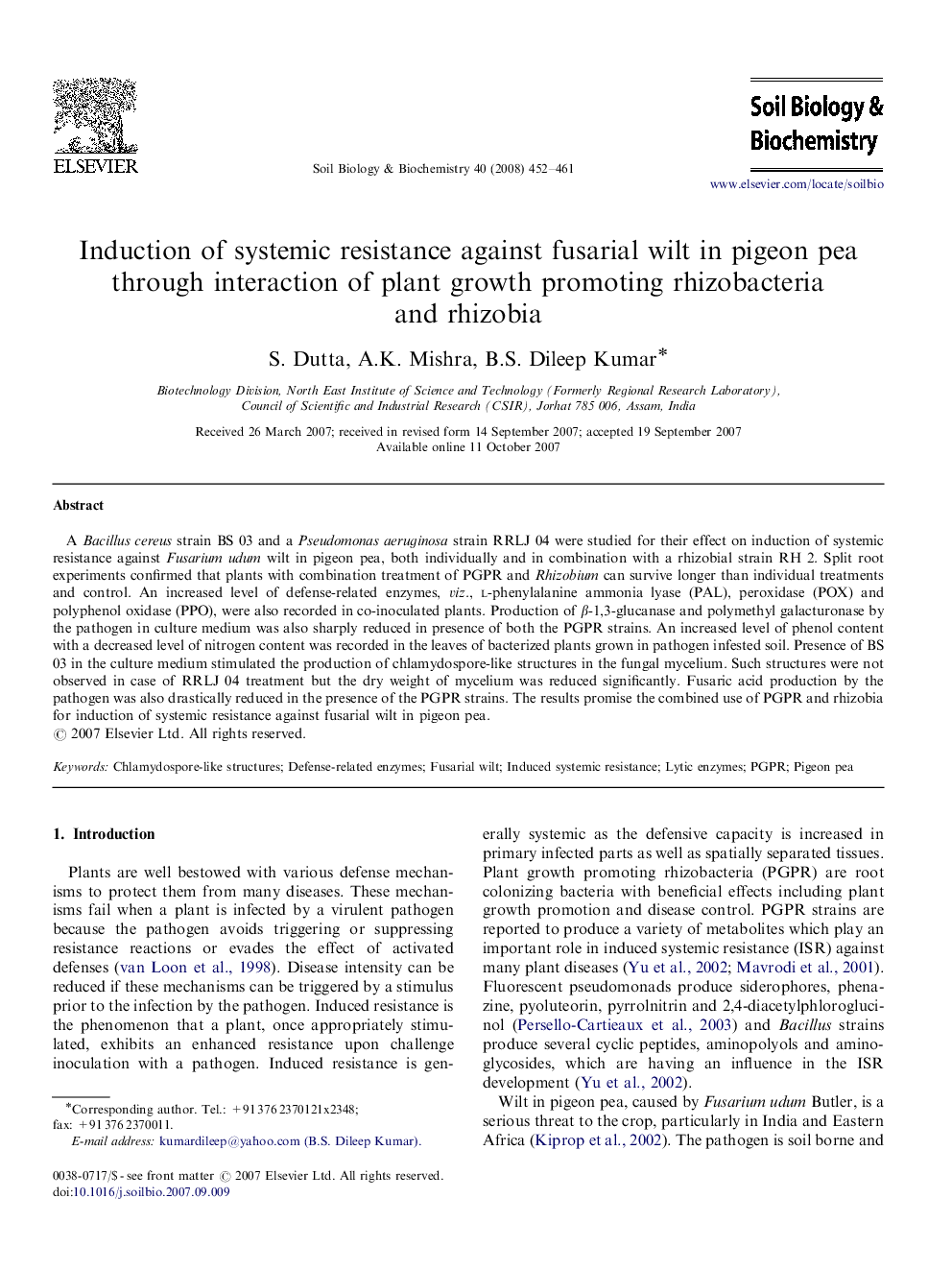| Article ID | Journal | Published Year | Pages | File Type |
|---|---|---|---|---|
| 2025339 | Soil Biology and Biochemistry | 2008 | 10 Pages |
A Bacillus cereus strain BS 03 and a Pseudomonas aeruginosa strain RRLJ 04 were studied for their effect on induction of systemic resistance against Fusarium udum wilt in pigeon pea, both individually and in combination with a rhizobial strain RH 2. Split root experiments confirmed that plants with combination treatment of PGPR and Rhizobium can survive longer than individual treatments and control. An increased level of defense-related enzymes, viz., l-phenylalanine ammonia lyase (PAL), peroxidase (POX) and polyphenol oxidase (PPO), were also recorded in co-inoculated plants. Production of β-1,3-glucanase and polymethyl galacturonase by the pathogen in culture medium was also sharply reduced in presence of both the PGPR strains. An increased level of phenol content with a decreased level of nitrogen content was recorded in the leaves of bacterized plants grown in pathogen infested soil. Presence of BS 03 in the culture medium stimulated the production of chlamydospore-like structures in the fungal mycelium. Such structures were not observed in case of RRLJ 04 treatment but the dry weight of mycelium was reduced significantly. Fusaric acid production by the pathogen was also drastically reduced in the presence of the PGPR strains. The results promise the combined use of PGPR and rhizobia for induction of systemic resistance against fusarial wilt in pigeon pea.
